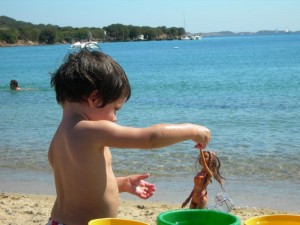
For along time melanoma was regarded as a tumor of adults. In fact, it ’s rare in children, but its incidence appears to be on the rise, Strouse ’s studies have shown an alarming trend of melanoma among young people, an increase of 3% per year from 1973 to 2001. It affects only seven in 1 million children and adolescents, according to 2002 statistics from the National Cancer Institute. But that number has increased steadily since 1982, when the number was three per million children. Reasons for the increase are uncertain, some experts attribute it to excessive sun exposure and blistering sunburns in early childhood. About half of the U.S. population reported having sunburn in childhood and 5% of adolescents have at least 5 sunburn (Davis 2002). We must add the raise in teenagers who are exposed to artificial sources of UV. Genetic predispositions and environmental factors may be precursors to childhood skin cancers. Light hair, freckled children are at highest risk. Most children with melanoma have no family history of the disease The disease presentation may also differ from the typical presentation in adults, with an amelanotic skin lesion more suggestive of verruca or pyogenic granuloma. Metastases to the lymph nodes, particularly the sentinel nodes, were found more frequently in children with melanoma than would be expected in adults with the same stage of disease, yet with aggressive surgical and medical treatment, stage-for-stage the survival in children was better than expected for adults, <10 years old seemed to have better survival than the older children. Systemic adjuvant treatments are more problematic. α-Interferon is Food and Drug Administration–approved for high-risk, resected melanoma and remains the only treatment available for children. So it is extremely important to inform families about the risks of sunburn in childhood in order to achieve a reduction in the incidence of melanoma. In my opinion it is also important that children visit a dermatologist to identify risk factors and atypical moles, and then their families can also learn how to protect their children from solar radiation.
Dott Nicola Angelotti, Piazza 4 Novembre, Massa, Italy